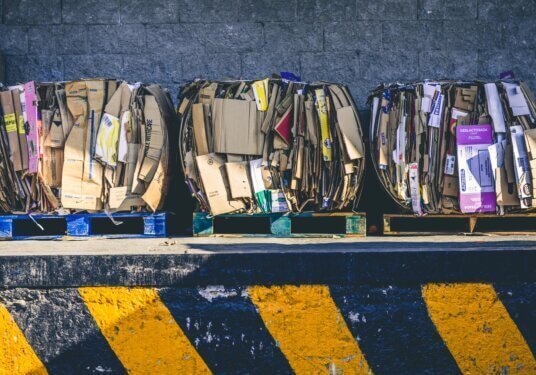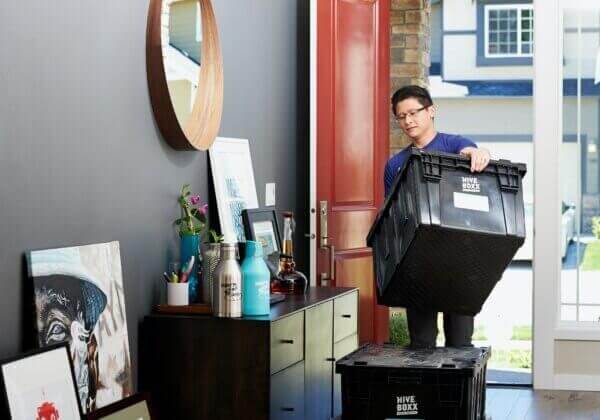Garbage Disposal in Japan – A Complete Guide!
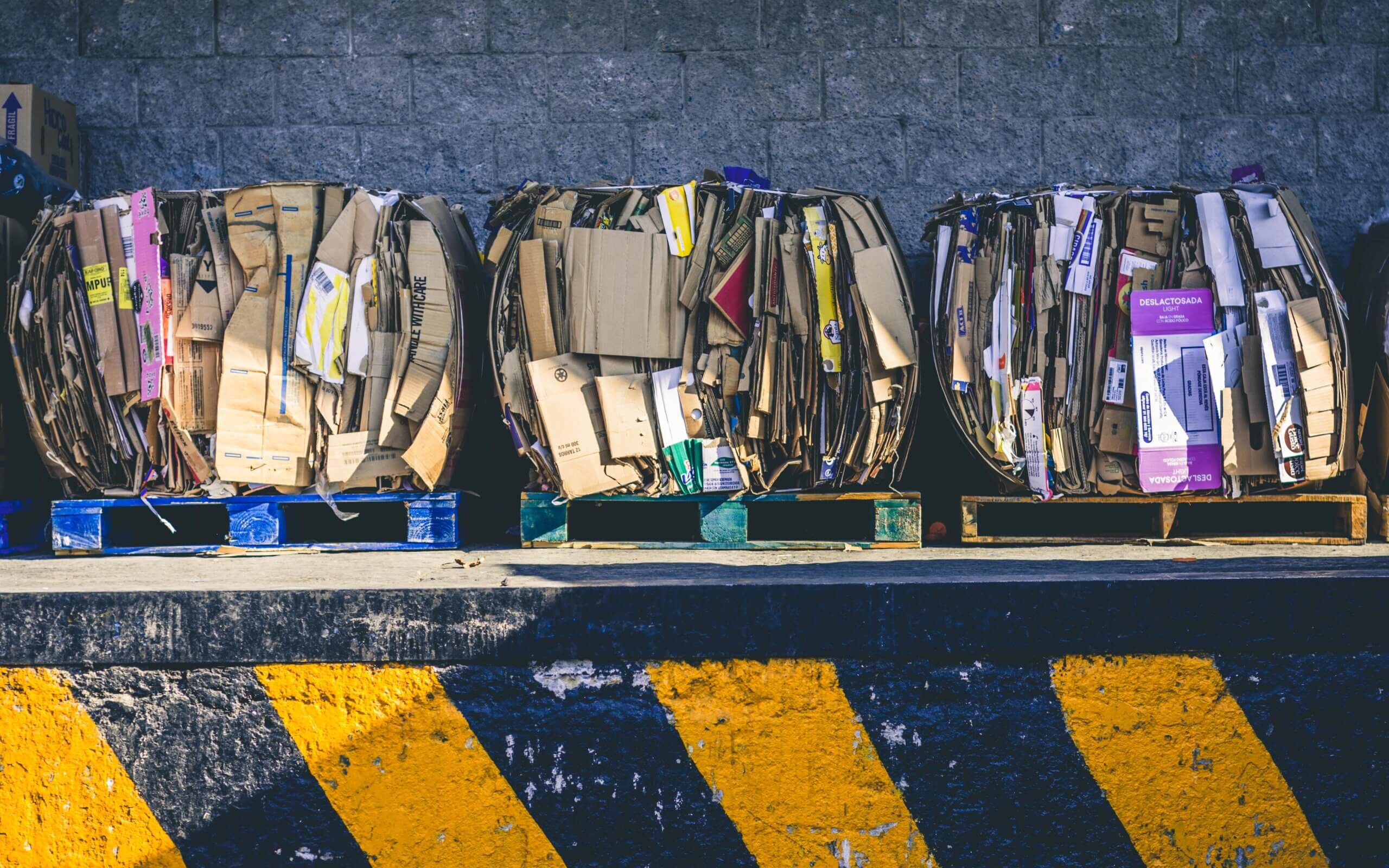
Ever wondered how Japan keeps its streets so impeccably clean? That is thanks to the discipline of the people in following the rules. Effective waste/garbage sorting is not only an eco-conscious effort but an actual legal requirement in Japan. You have to sort out the waste into different categories, from burnable, non-burnable, and recyclable, and there is another set of rules you have to follow when handling oversized waste. Understanding how the Japanese manage their waste is crucial for visitors and residents alike, in this guide, we will help you understand how to follow the rules of garbage disposal in Japan properly!
Sorting The Garbage in Japan
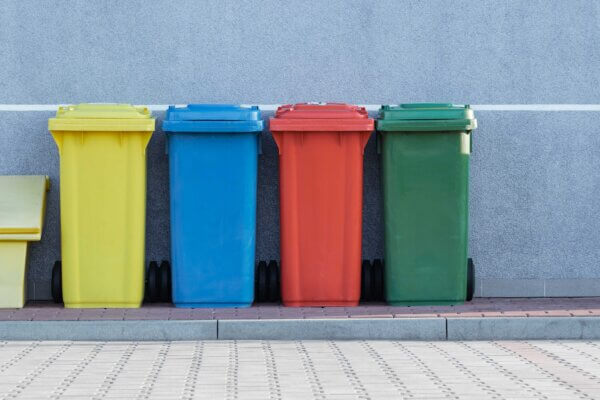
Japan places a strong emphasis on recycling and segregating waste, where sorting is a legal requirement, that is why if you get caught not following the rules, you could get yourself in trouble. So, to keep that from happening, keep on reading!
The regulations for sorting garbage vary based on your location, determined either by the city or the specific ward in large urban areas. To know the waste segregation rules in your area, you usually can find them easily on the municipality website. On top of that, they also provide detailed rules in English on their English-language websites. You will most likely receive a city guidebook that covers waste disposal during your initial registration with the municipality.
Although each city might have specific rules, just as a rule of thumb, residents segregate waste into categories: burnable (combustible), non-burnable (non-combustible), recyclables, and large/oversized waste. Each type of garbage is usually collected on different days and with a different frequency.
If your residence does not have a collection area, then you will have to find the closest public collection point to you. Chances are you will be notified of this when you move in, and collection points will also have schedules posted near them, so you can walk around and look for them. In these cases, you should only bring out your garbage in the morning of the collection day, as putting it out during other times will attract animals and cause problems.Lastly, oversized garbage includes large furniture and home appliances.
Garbage Classification in Japan
Burnable/Combustile
This category is also known as non-recyclable waste and most of your household waste will likely fall into the burnable category, consisting of materials that can be safely incinerated. For instance, kitchen scraps, used tissues, and cardboard are typically burnable.
How often is the collection? Twice a week
What is considered burnable:
- Kitchen Scraps (completely drained of liquid): Food waste, fruit and vegetable peels, coffee grounds, etc.
- Paper Products: Used tissues, paper towels, napkins, and cardboard (clean and free of contaminants).
- Textiles: Clothing, rags, old linens (made of natural fibers).
- Rubber and plastic items (usually the maximum length is 50 centimeters, if exceeds, cut them): including plastic containers, food wrap, shopping bags, etc.
- Wood: Small wooden items, chopsticks, toothpicks, including bamboo skewers.
- Leaves and Yard Waste: Grass clippings, small branches, and other organic garden waste.
- Leather items
- Styrofoam
- Videos, CDs, MDs, etc.
- Used cooking oil (harden before disposal)
Handling burnable waste:
- Make sure that the waste is drained from the liquid
- Generally, all can be placed in the same bag
Non-burnable/Non-combustile
This category is also known as non-recyclable waste and most of your household waste will likely fall into the burnable category, consisting of materials that can be safely incinerated. For instance, kitchen scraps, used tissues, and cardboard are typically burnable.
How often is the collection? Depends on each area, usually twice a month
What is considered non-burnable:
- Metals: Aluminum, steel, copper, and other metal items.
- Glass: Bottles, jars, and other glass containers.
- Plastics: Certain types of plastics that do not combust safely.
- Electronics: Electronic waste (e-waste), including computers, smartphones, and other electronic devices.
- Hazardous Waste: Chemicals, batteries, paints, and other materials that pose a risk to human health or the environment.
- Large Appliances: Refrigerators, washing machines, and other bulky items.
Handling non-burnable waste:
Place items in a separate bag for these types of unburnable garbage:
- Metal garbage
- Ligters, spray cans, and gas cassettes
- Others
Recyclable
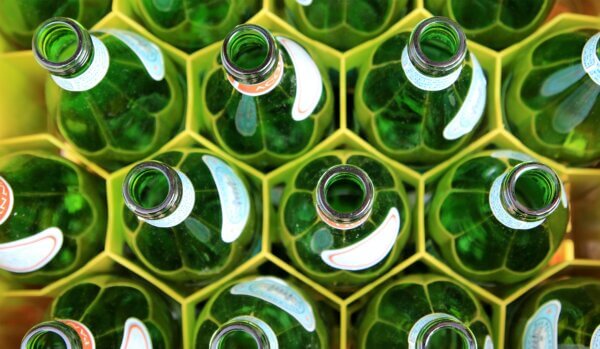
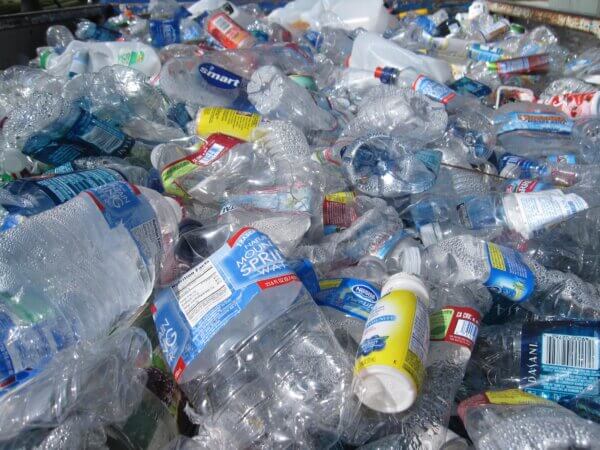
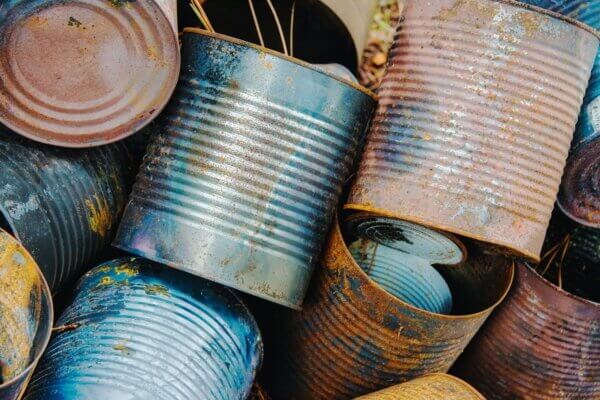
In Japan, recyclable waste is categorized into several types, and the classification. Oftentimes, it is required that residents have to clean and sort their recyclables into specific categories, although this may vary slightly depending on the region. Local municipalities provide guidelines on how to properly dispose of each type of recyclable waste so make sure to see the official guidelines made by your city office!
What is considered non-burnable:
- Paper and Cardboard: Newspapers, magazines, cardboard boxes, and other paper products.
- Glass: Bottles and jars made of glass.
- Metal: Aluminum and steel cans.
- Plastic: PET bottles, plastic containers, and packaging with specific recycling symbols.
- Textiles: Clothing and fabric items.
- Small Electronics: Certain small electronic devices and appliances.
Handling recyclable waste:
- For cans and bottles, make sure to rinse them lightly, if there is a waste container provided at the collection spot, don't put the waste in a bag, but directly into the provided containers, if nothing is provided then use a designated trash bag.
- For PET bottles with the sign below, make sure to remove the cap and the label, rinse the bottle lightly, and crush it

- Used paper and card boxes should be bundled together
Getting Rid of Oversized Waste (粗大ゴミ) in Japan
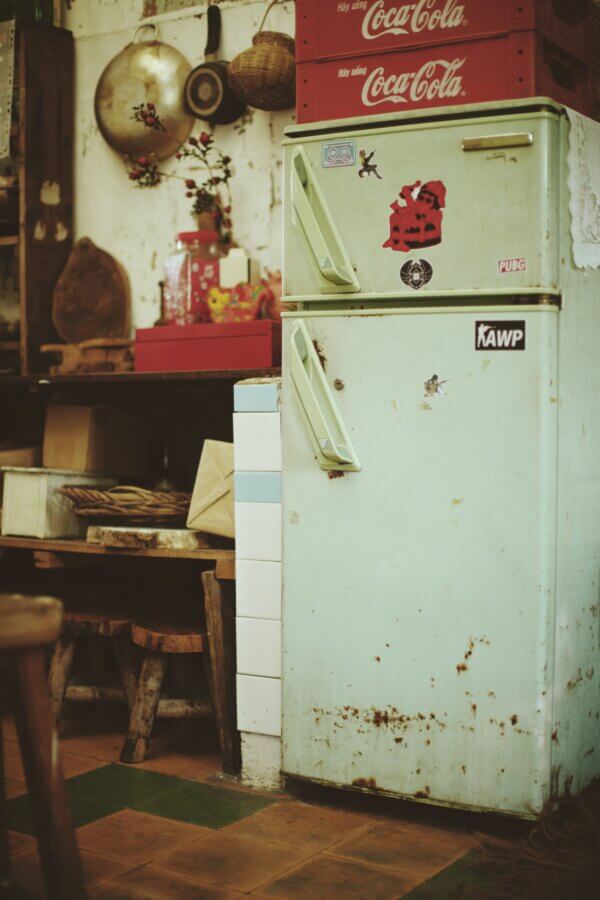
Oversized garbage includes items that cannot fit into standard waste bins due to their size or shape, for instance, furniture, appliances, bicycles, and other bulky household items. It's crucial to recognize these items and follow the designated disposal procedures to maintain the high standards of waste management upheld in Japan. There are 3 ways we can get rid of
Getting Rid of The Oversized Waste with The Local Authorities
- Apply through online or over the phone: Unlike regular garbage, oversized items are not typically collected on a regular basis that is why you will need to schedule a pick-up date and choose what kind of oversized waste you need to get rid of. While choosing the types, you will know how much you need to pay as shown below.
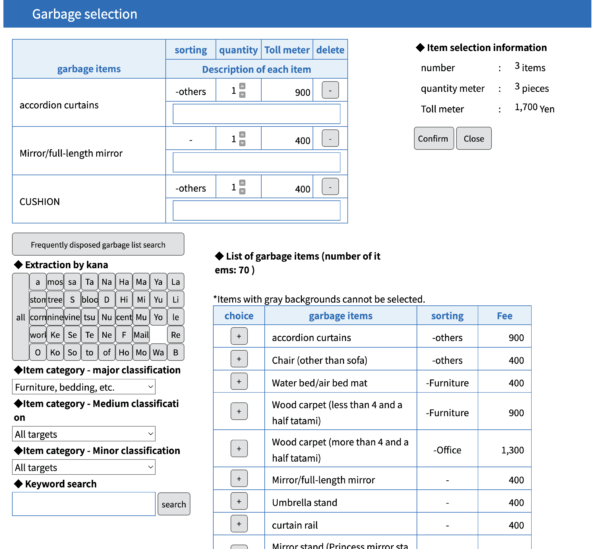
- Disposal Fees: In some cases, a disposal fee may apply for oversized items, and residents are required to pay this fee either in advance or on the day of collection. The fees help cover the costs associated with the proper disposal and recycling of these large items. The fee for each type of waste ranges between 1,000 and 6,000 yen. You can buy these tickets at any convenience stores.
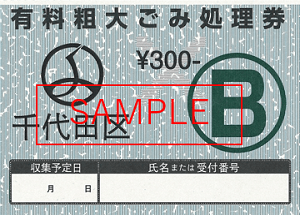
- Preparing for Collection: To facilitate the smooth disposal process, residents must prepare the oversized item according to the municipality's guidelines. This may involve disassembling the item, removing certain components, or securing it in a specific manner. Clear instructions are usually provided by the municipal office to ensure that the oversized garbage can be handled safely and efficiently during collection.
Getting Rid of The Oversized Waste using a Service
Sometimes if you have too many oversized waste, it's better to use a oversized garbage disposal service since it could be cheaper. However if you just want to throw away 1 or 2 things, then I would recommend you to just stick with the city office service one.
You can just type 粗大ゴミサービス (sodai gomi sabisu) on Google and you'll find a lot of options!
Getting Rid of The Oversized Waste by Selling them Online
Beyond traditional disposal methods, there's a growing trend of utilizing online platforms to sell or give away bulky items, providing a sustainable and eco-friendly alternative. In Japan, platforms like Facebook Marketplace, Craigslist, and Mercari are one of the go-to platforms people use. We have more options for you though, read on!
Facebook Marketplace
One of the go-to platforms for selling oversized items in Japan is Facebook Marketplace. This user-friendly and widely accessed platform allows you to connect with potential buyers in your local community. Simply create a listing, provide accurate details about the item, include clear photos, and set a reasonable price. Buyers can then contact you directly, making the transaction and pickup process straightforward.
Craigslist
Craigslist, an international online classifieds platform, has a strong presence in Japan. Users can post free listings for a wide range of items, including oversized belongings. By specifying your location and the item's details, you can reach a broader audience of potential buyers or those looking for free giveaways.
Mercari
Mercari, a popular Japanese online marketplace, is known for its user-friendly interface and secure transactions. Listing oversized items on Mercari allows you to tap into a vast network of buyers who may be specifically searching for second-hand furniture, appliances, or other bulky items. Be sure to provide detailed descriptions and quality photos to attract potential buyers.
Mottainai Flea Markets
Participating in Mottainai flea markets, where people sell second-hand goods and promote the concept of "mottainai" (waste not), is another eco-conscious option. These events often take place in local communities, providing an opportunity to connect with like-minded individuals interested in repurposing items.
Jimoty is a local online marketplace in Japan, providing a platform for residents to buy and sell items within their community. It's a fantastic option to connect with neighbors interested in your oversized items, fostering a sense of community engagement.
More Insights on Garbage Disposal in Japan
- What happens if you don't follow the rules? Failure to comply with the rules can result in both legal and social consequences. This may lead to fines or penalties imposed by local authorities and the severity can vary depending on the nature and frequency of the violation. As Japanese society places great importance on community harmony, people who neglect waste disposal responsibilities may find themselves facing disapproval or passive-aggressive attitudes from within their community.
- If your apartment complex provides garbage rooms or designated collection areas exclusively for residents, you are allowed to dispose your trash at your convenience, not limited to scheduled garbage days.
- In the absence of a dedicated garbage area in your building, take a brief stroll around your neighborhood to locate a designated garbage collection point. Look for posted signs indicating the collection schedule.
- Check whether your local area mandates the use of specific garbage bags. Some places require residents to utilize special bags, with the aim of covering the expenses associated with waste transportation and incineration.
- Ensure timely disposal of your garbage. When uncertain, follow the example set by your neighbors. Generally, it's acceptable to place the relevant garbage outside the night before the scheduled pickup since they usually pick the trash up at around 8am.

English Teaching Part-Time Job
No Experience? No Problem
We provide training, observations, and feedback for new teachers. We will help you to become an effective teacher!




